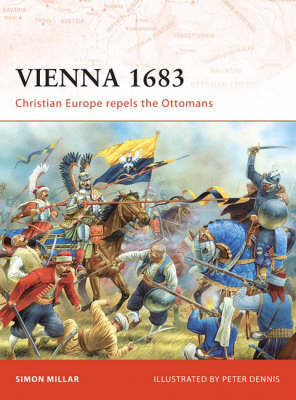Campaign
4 primary works
Book 166
Wellington said that of all, the battle of Assaye from the Second Mahratta War (1803-05) in central India, was 'the bloodiest for the numbers that I ever saw'. The East India Company's army of 19,000 men, under major-general Arthur Wellesley, was sent to put down a rebellion in October 1802 of Mahratta warriors. On 23 September 1803, Wellesley encountered what he had thought to be an infantry force, but which turned out to be the entire army of his opponents in a strong position near to the Kaitna River. This book examines the bitter 3-hour battle, which was won by Wellesley's coolness and inspiring leadership.
Book 169
Somme is still on record as the largest number of deaths in any one day in any war. This book explores the myths of this infamous battle and explains the underlying causes of the conflict, as well as the use of mines, tunnels, gas and flame throwers by the British in combination with innovative tactics such as smoke. Covering the first day of the Somme, Andrew Robertshaw analyses the battle through November, explaining how British battle tactics developed as a result of the experience of the Somme. He provides an overview of the events along the entire frontline, examining the actions of two British Corps, VIII at Serre and XIII at Montauban, to determine why the Somme epitomised the proverbial double-edged sword.
Book 187
This is a crucial new study on one of the seminal events in military history dispelling many of the myths surrounding Cambrai 1917. Common perception classifies it as the 'world's first tank battle' when in fact it was not. Instead, as the author points out, the importance of Cambrai was that it was the first use of armour as an operational shock tactic and with this emergence of the pre-eminence of armour, the conduct of war was irrevocably changed. The battle also heralded the use of aircraft marking the birth of modern combined arms techniques. Written by a military historian and serving soldier, this is a fascinating insight into a battle which was a stalemate yet spawned a host of war-winning tactics.
Book 191
The capture of the Hapsburg city of Vienna was a major strategic aspiration for the Islamic Ottoman Empire, desperate for the control that the city exercized over the Danube and the overland trade routes between southern and northern Europe. In July 1683 Sultan Mehmet IV proclaimed a jihad and the Turkish grand vizier, Kara Mustafa Pasha, laid siege to the city with an army of 150,000 men. In September a relieving force arrived under Polish command and joined up with the defenders to drive the Turks away. The main focus of this book is the final 15-hour battle for Vienna, which peaked with a massive charge by three divisions of Polish winged hussars. This hard-won victory marked the beginning of the decline of the Islamic Ottoman Empire, which was never to threaten central Europe again.

